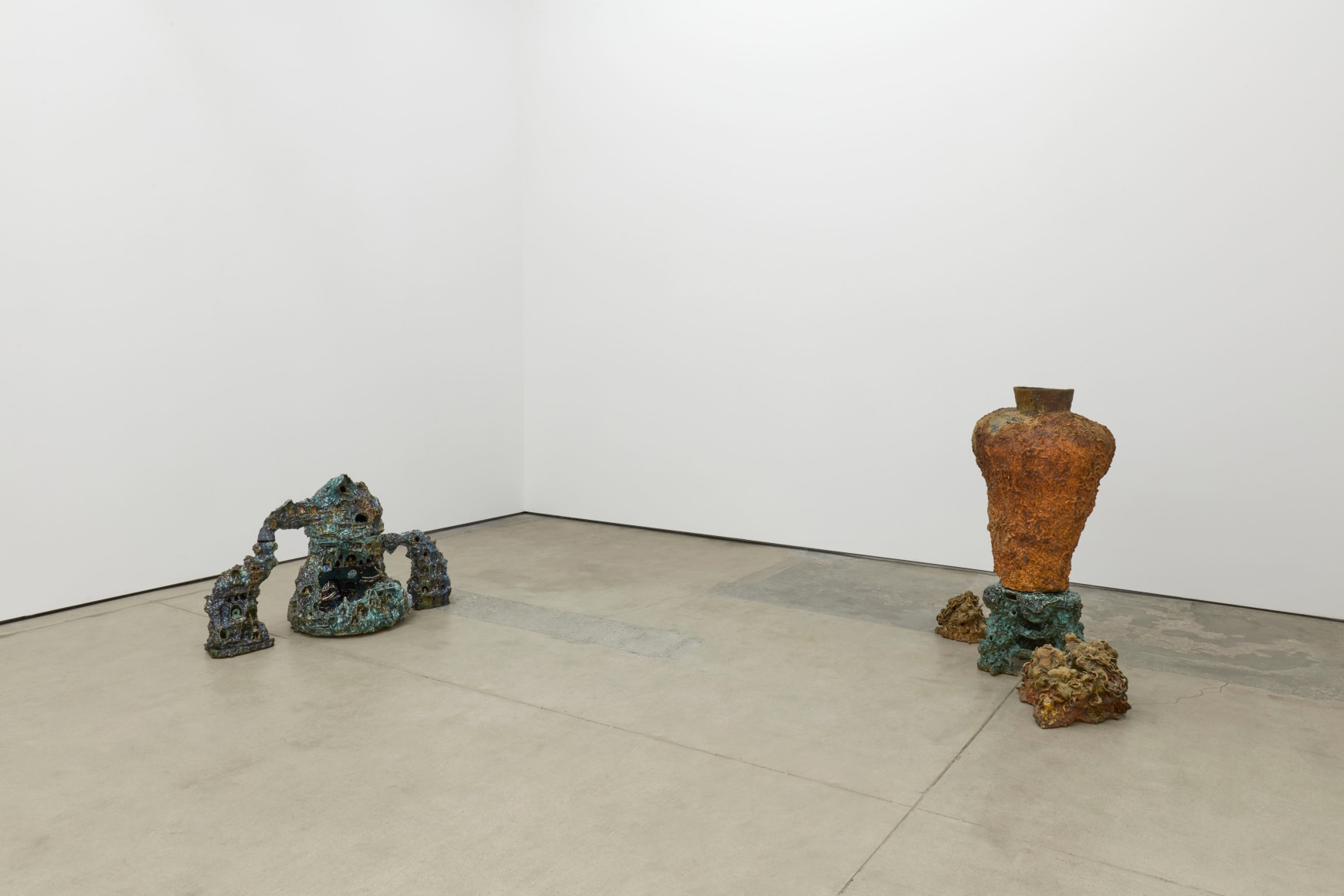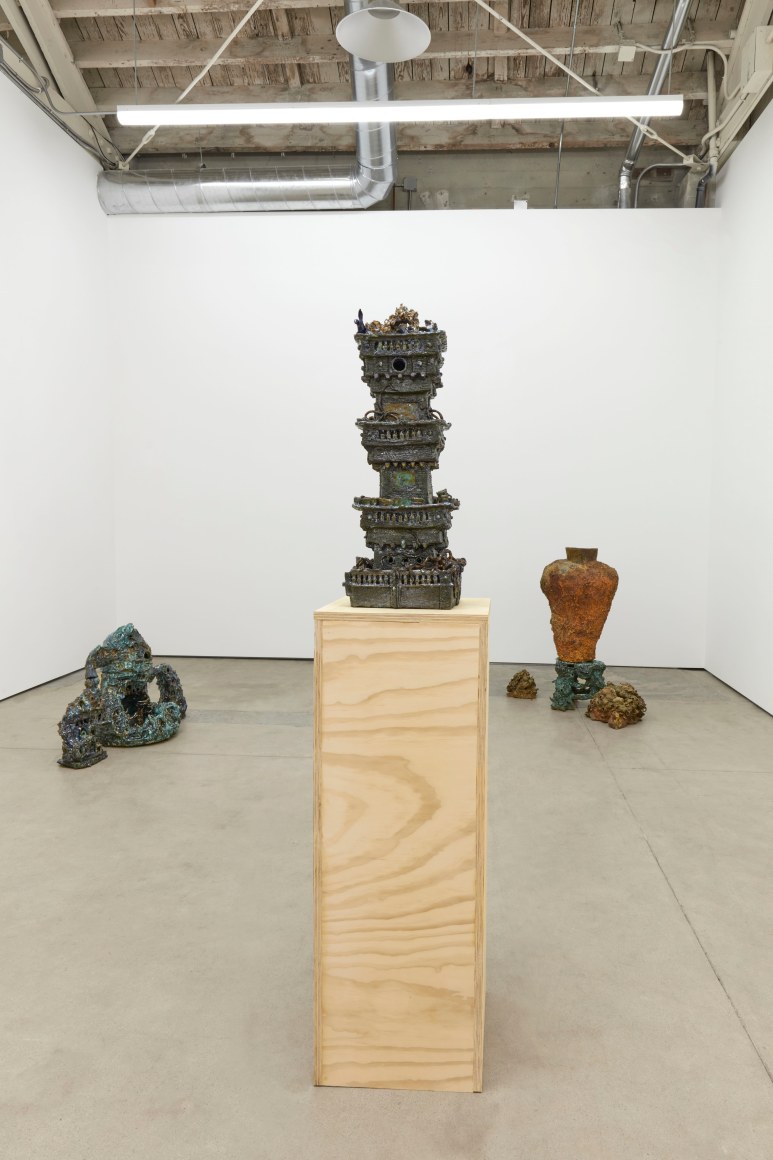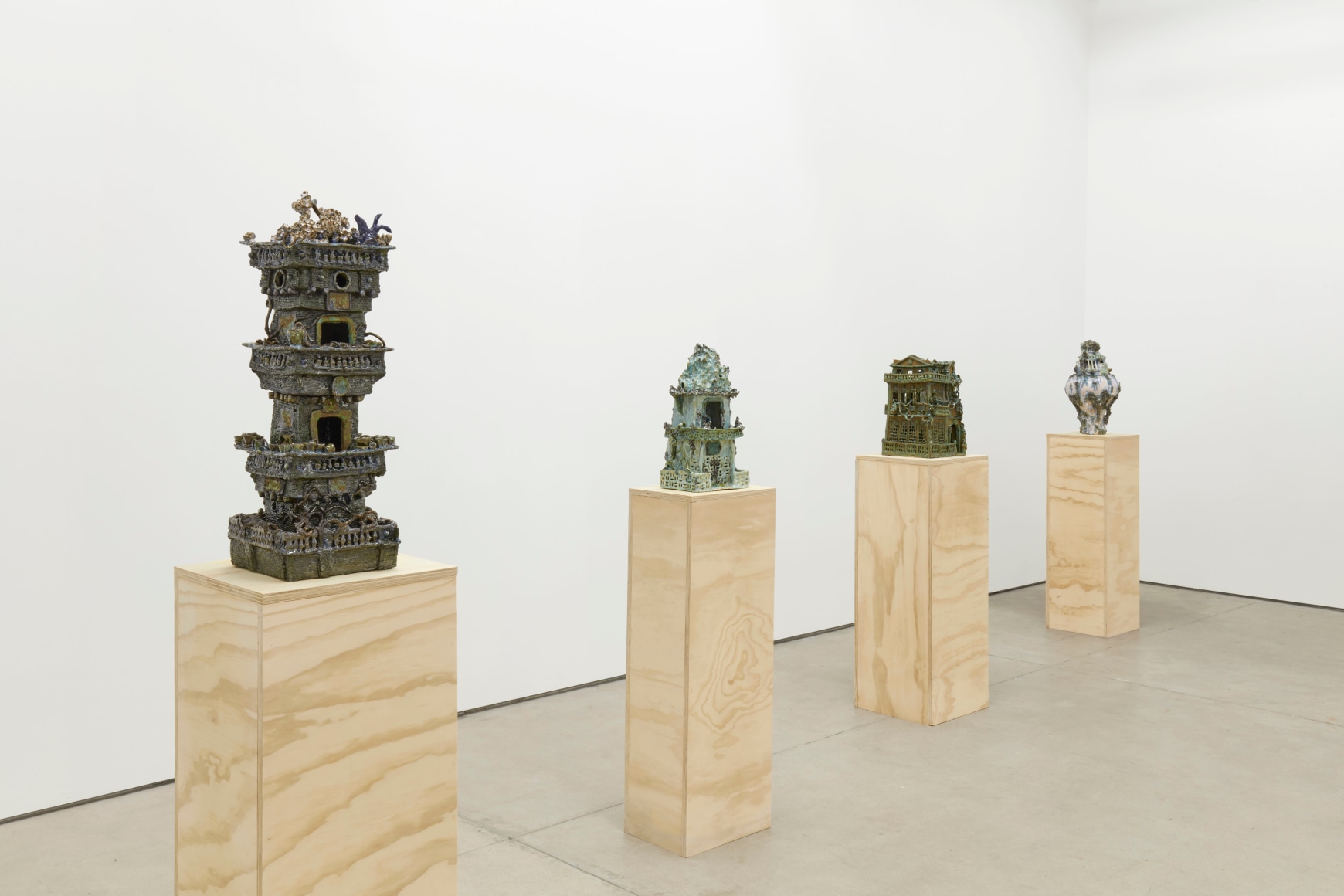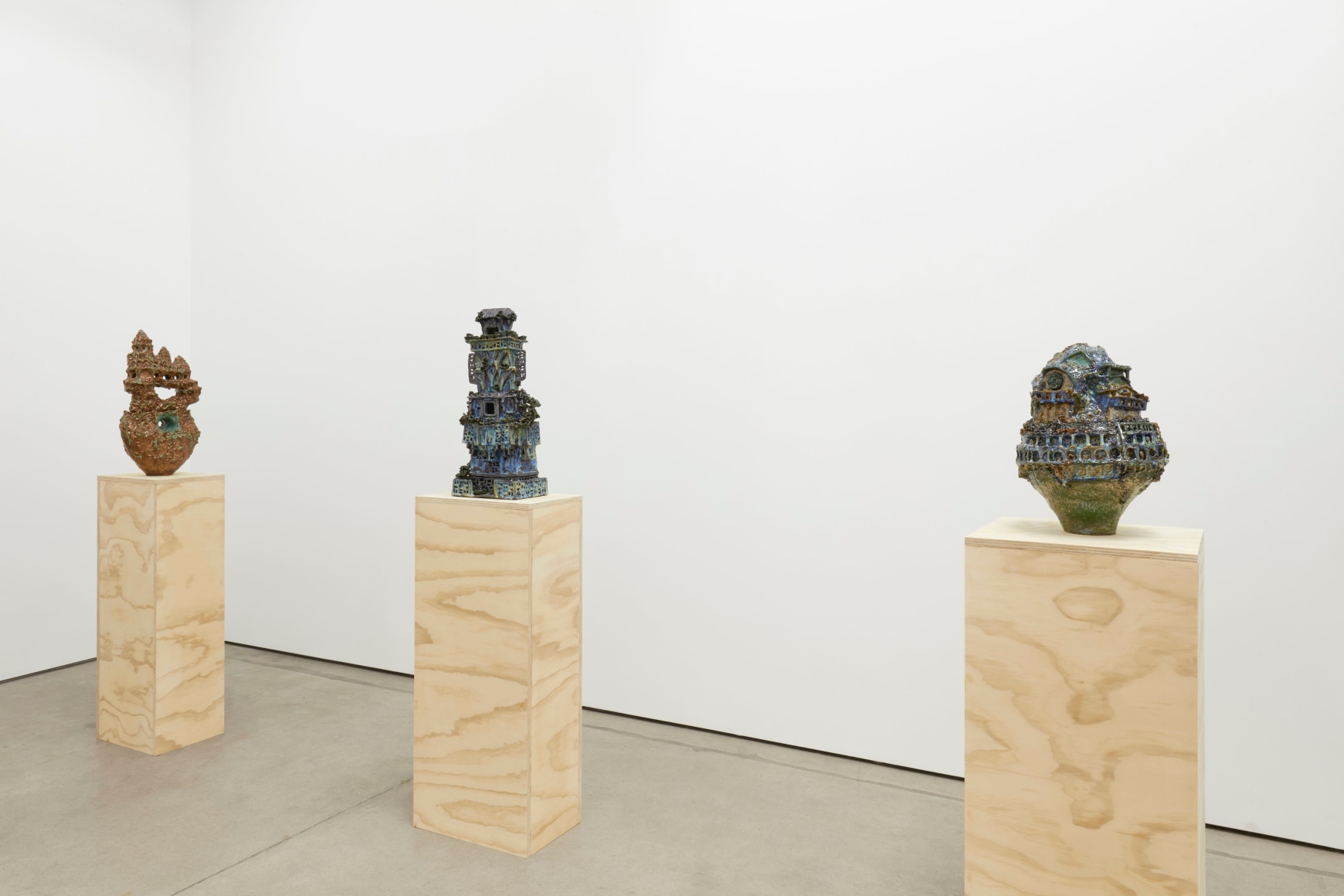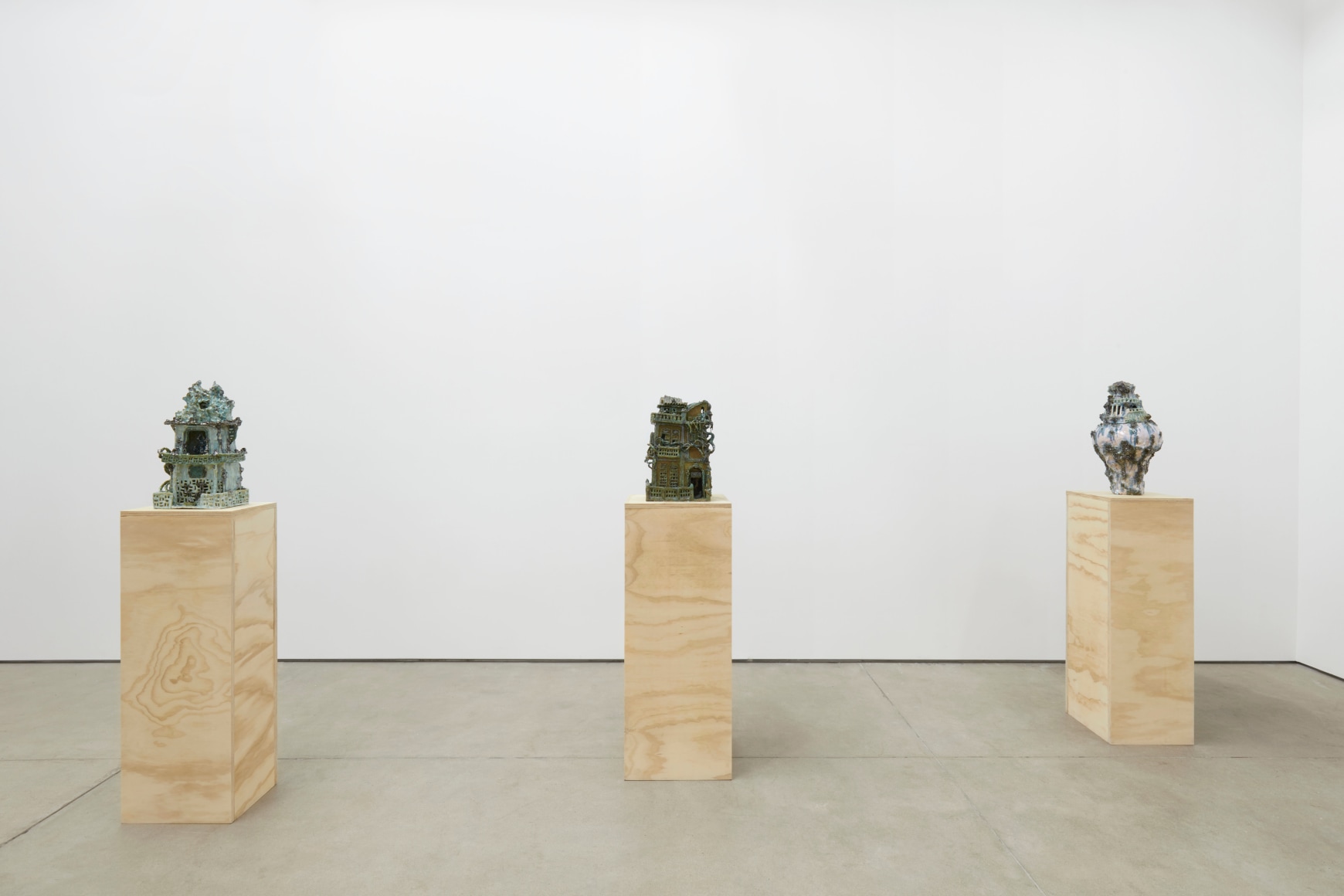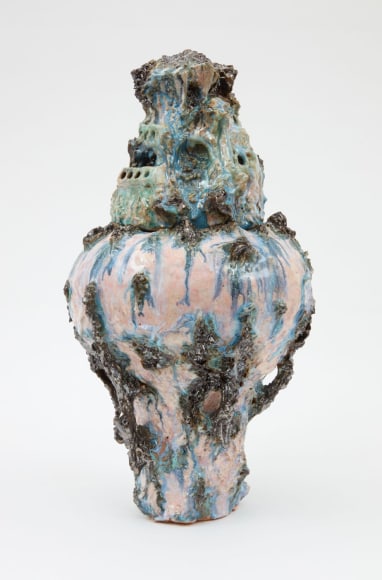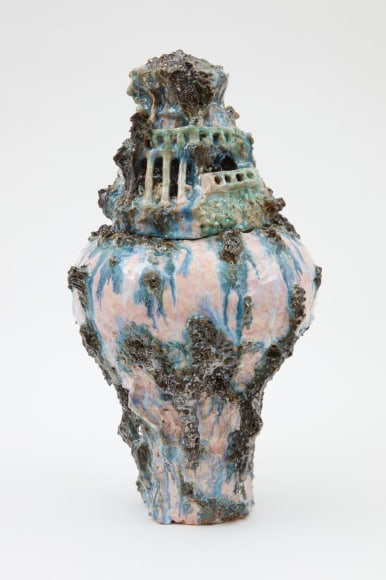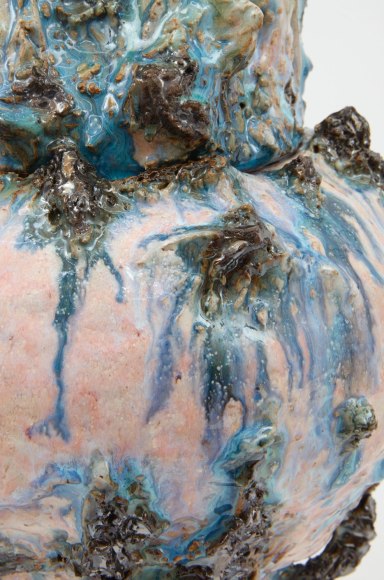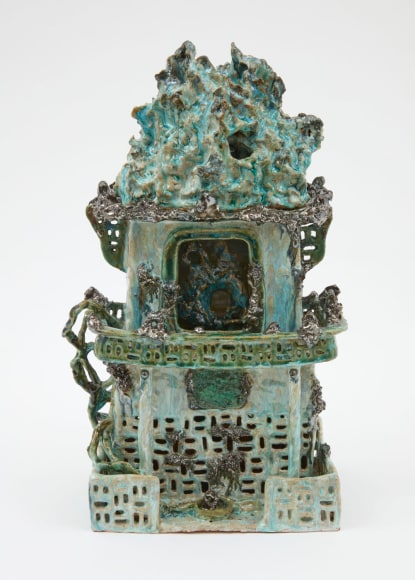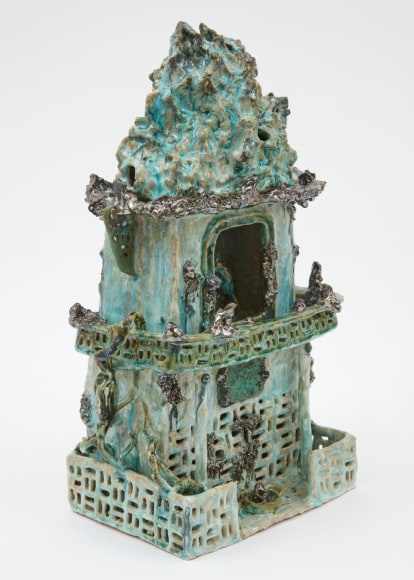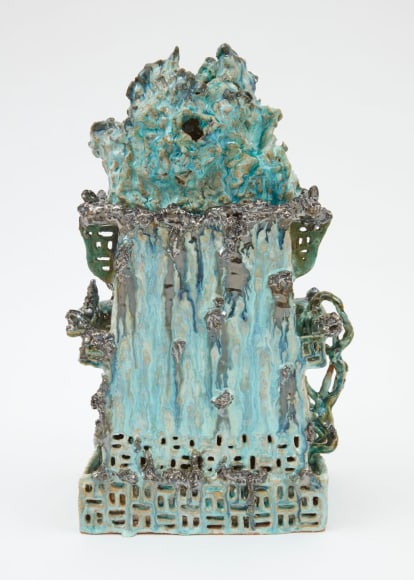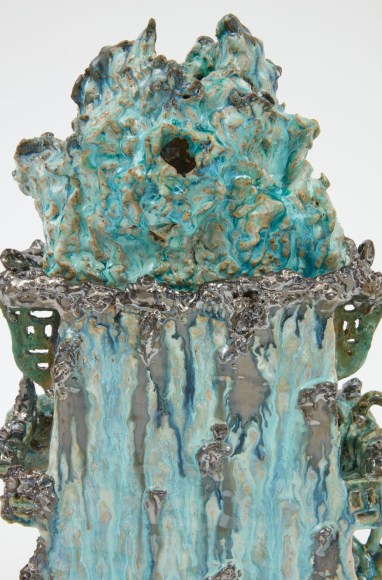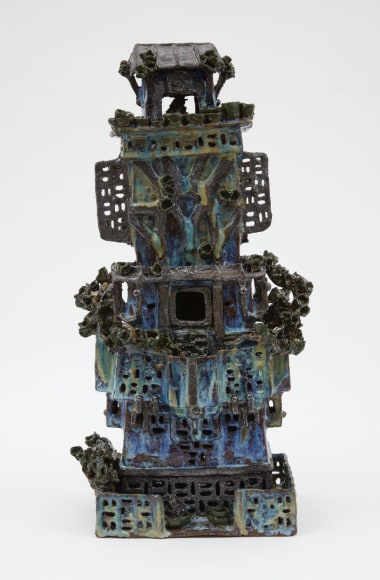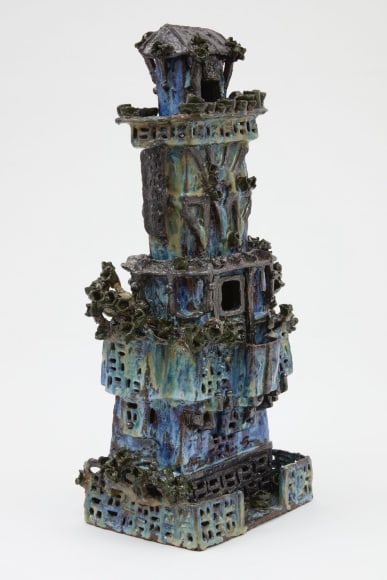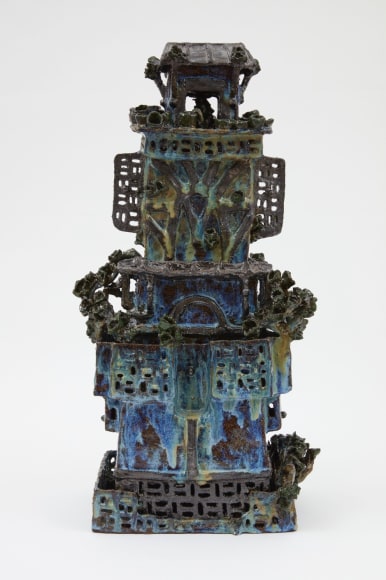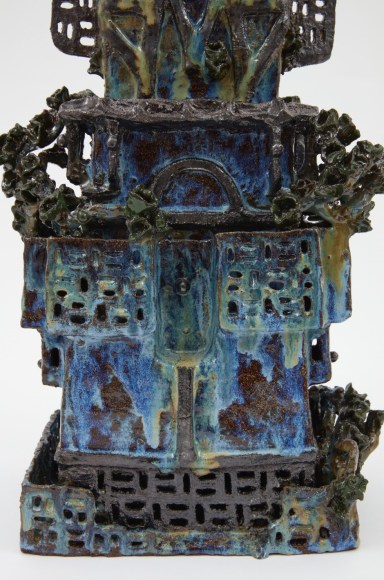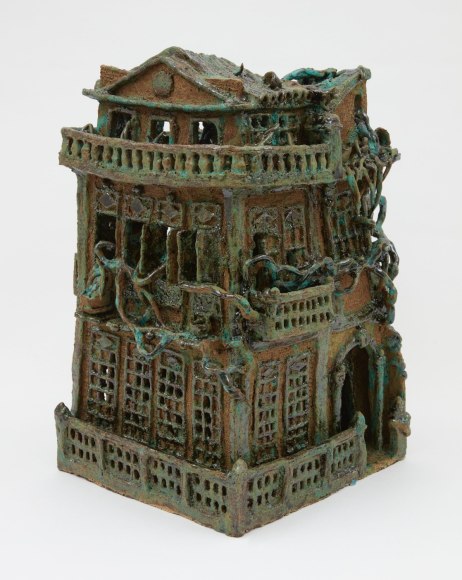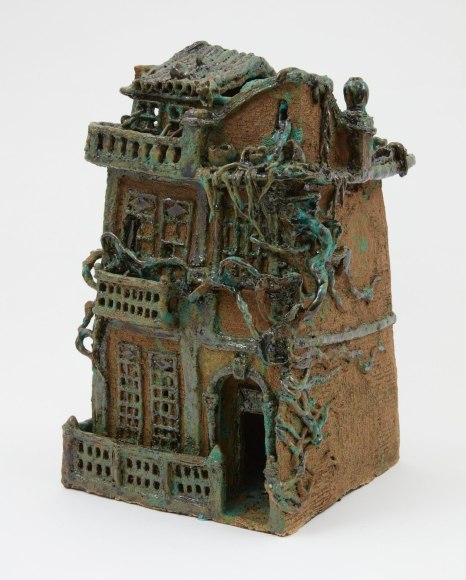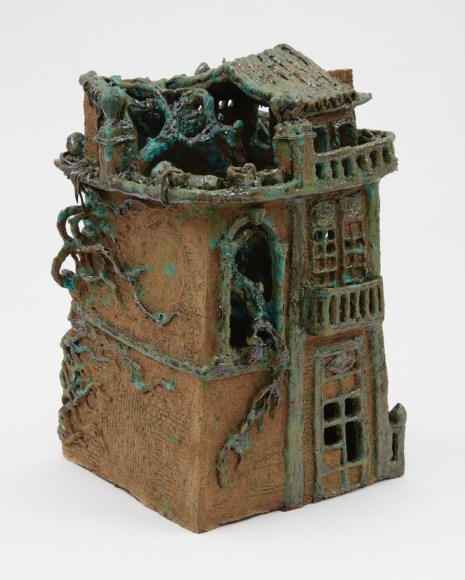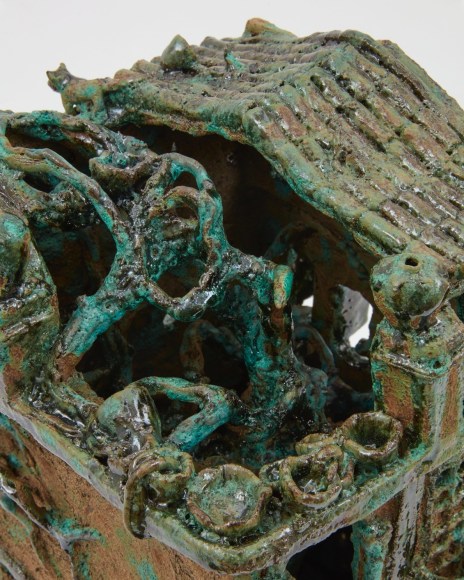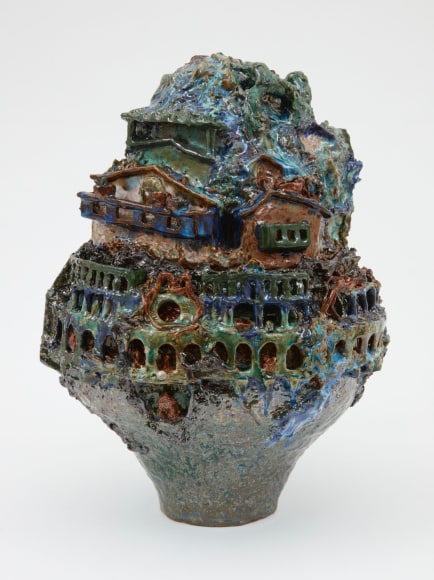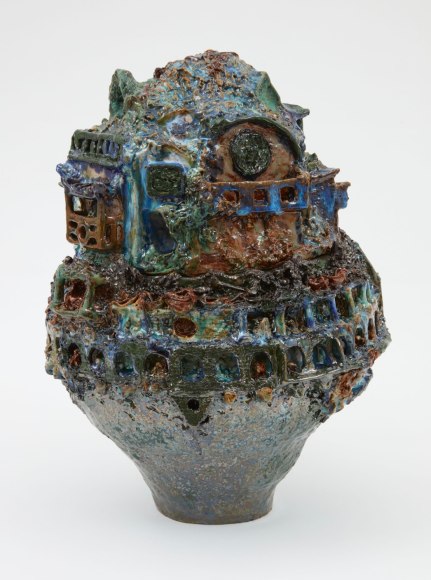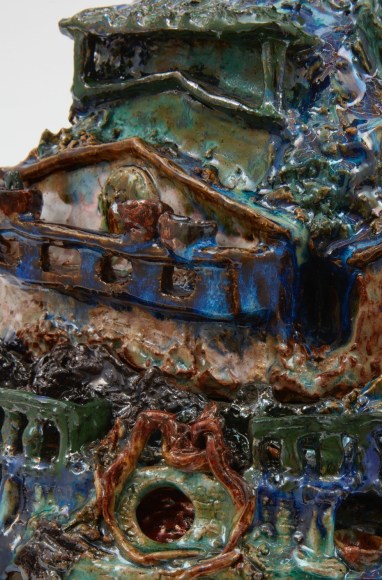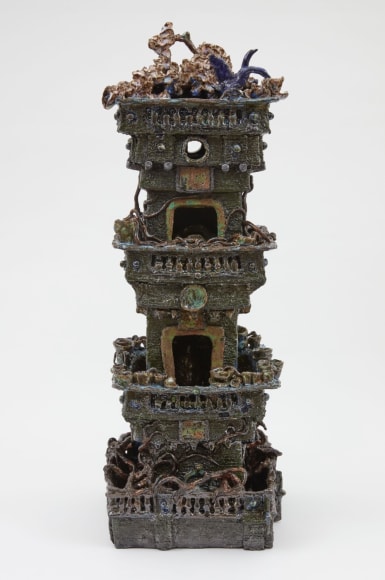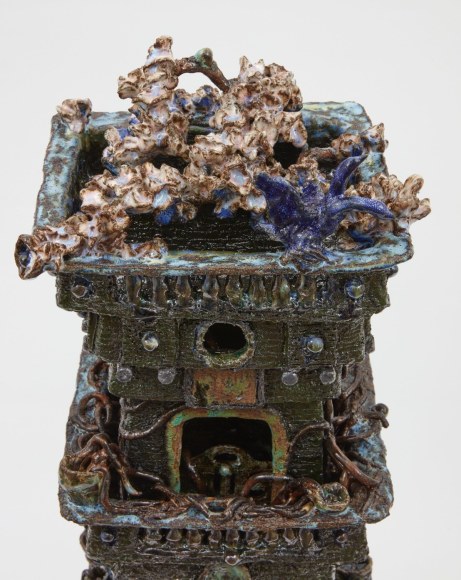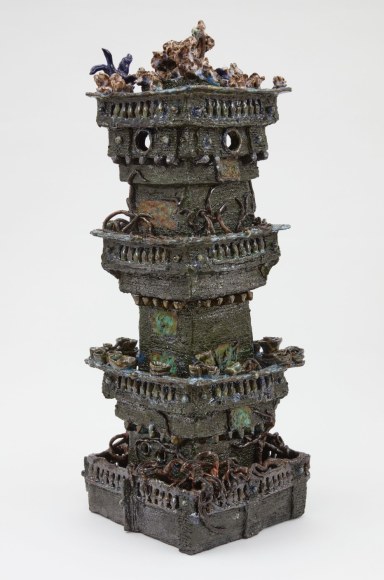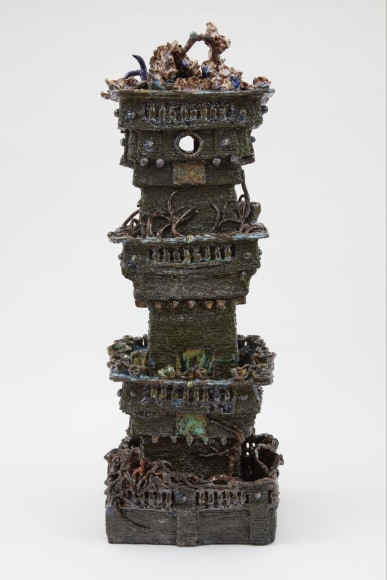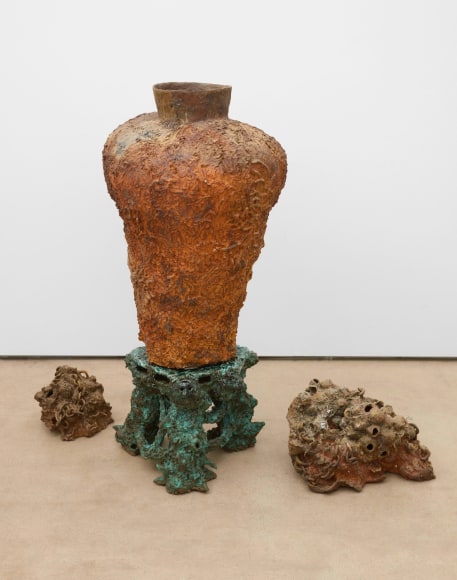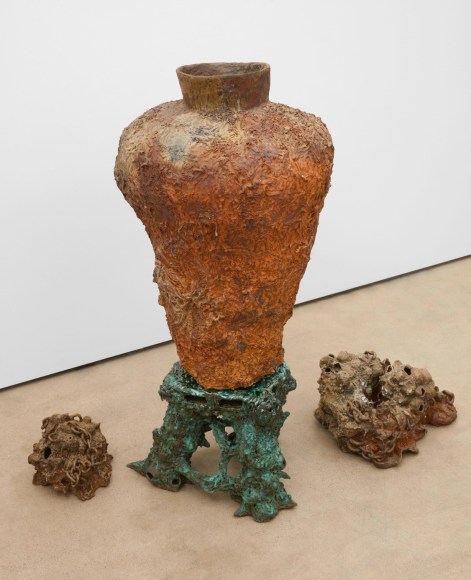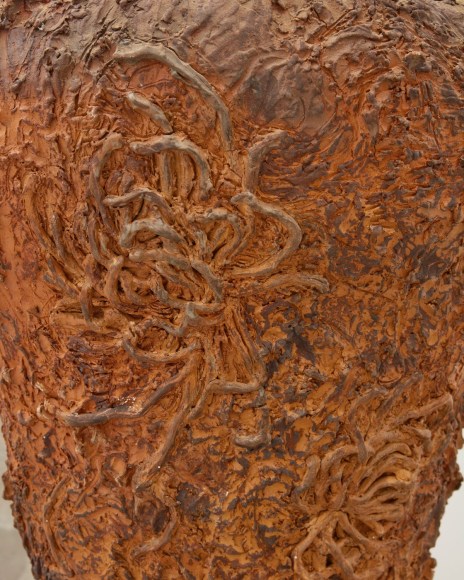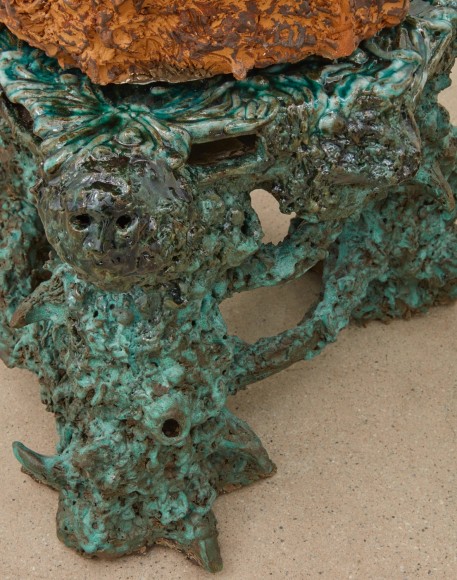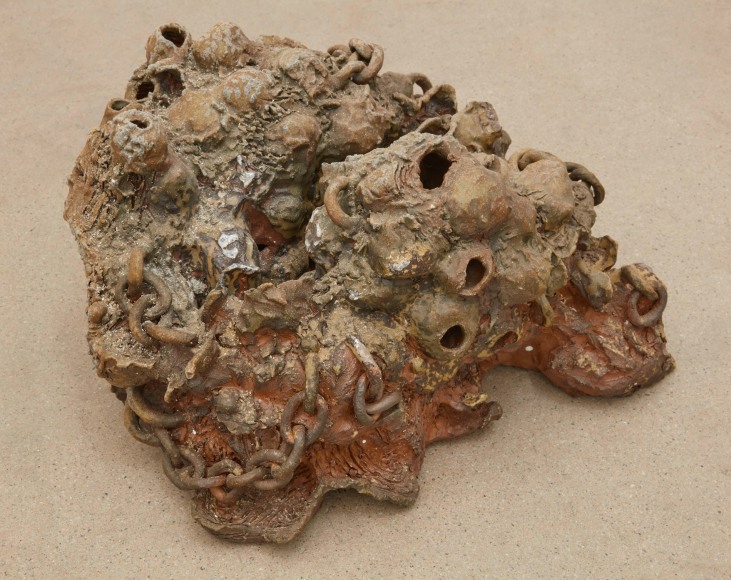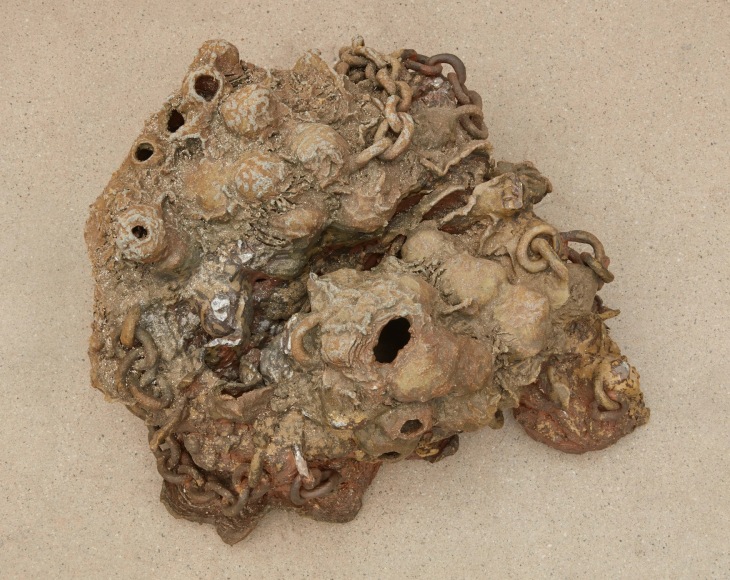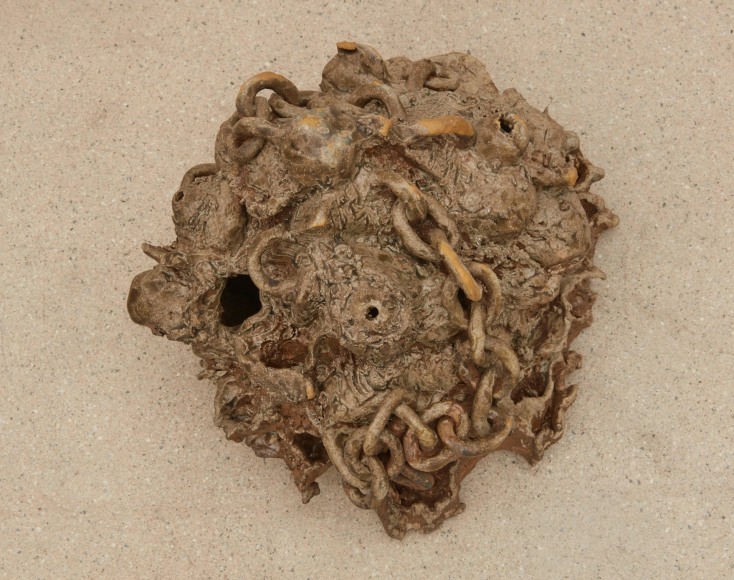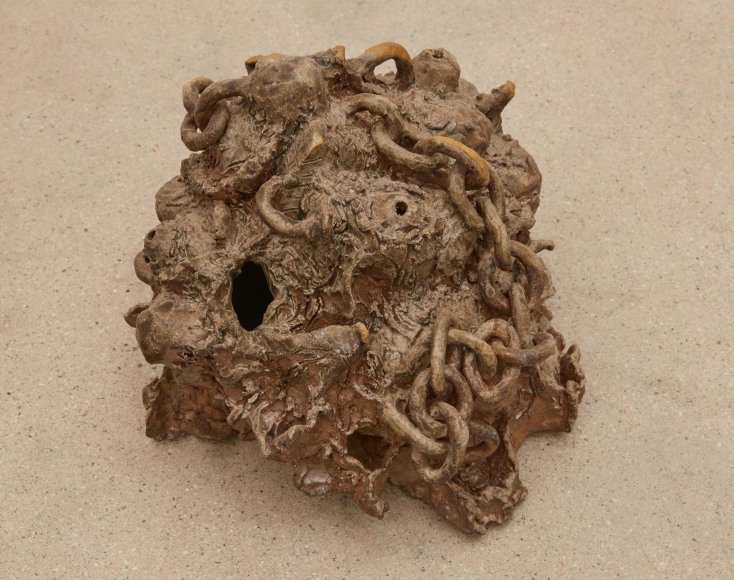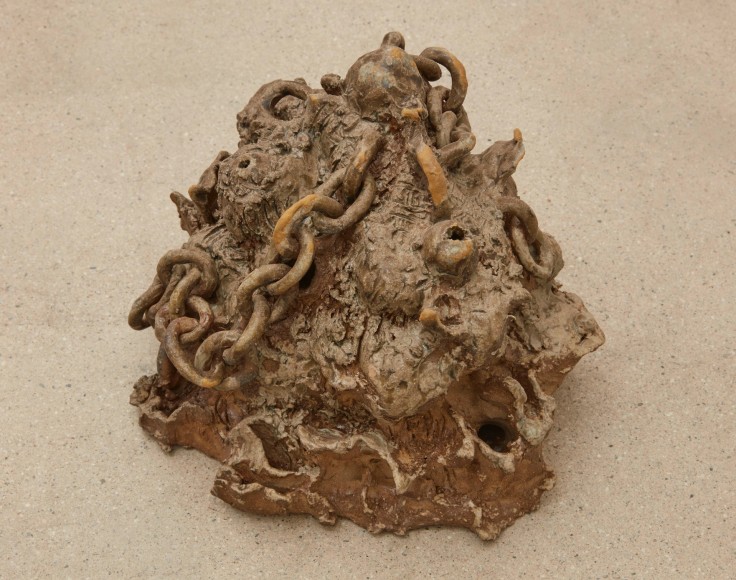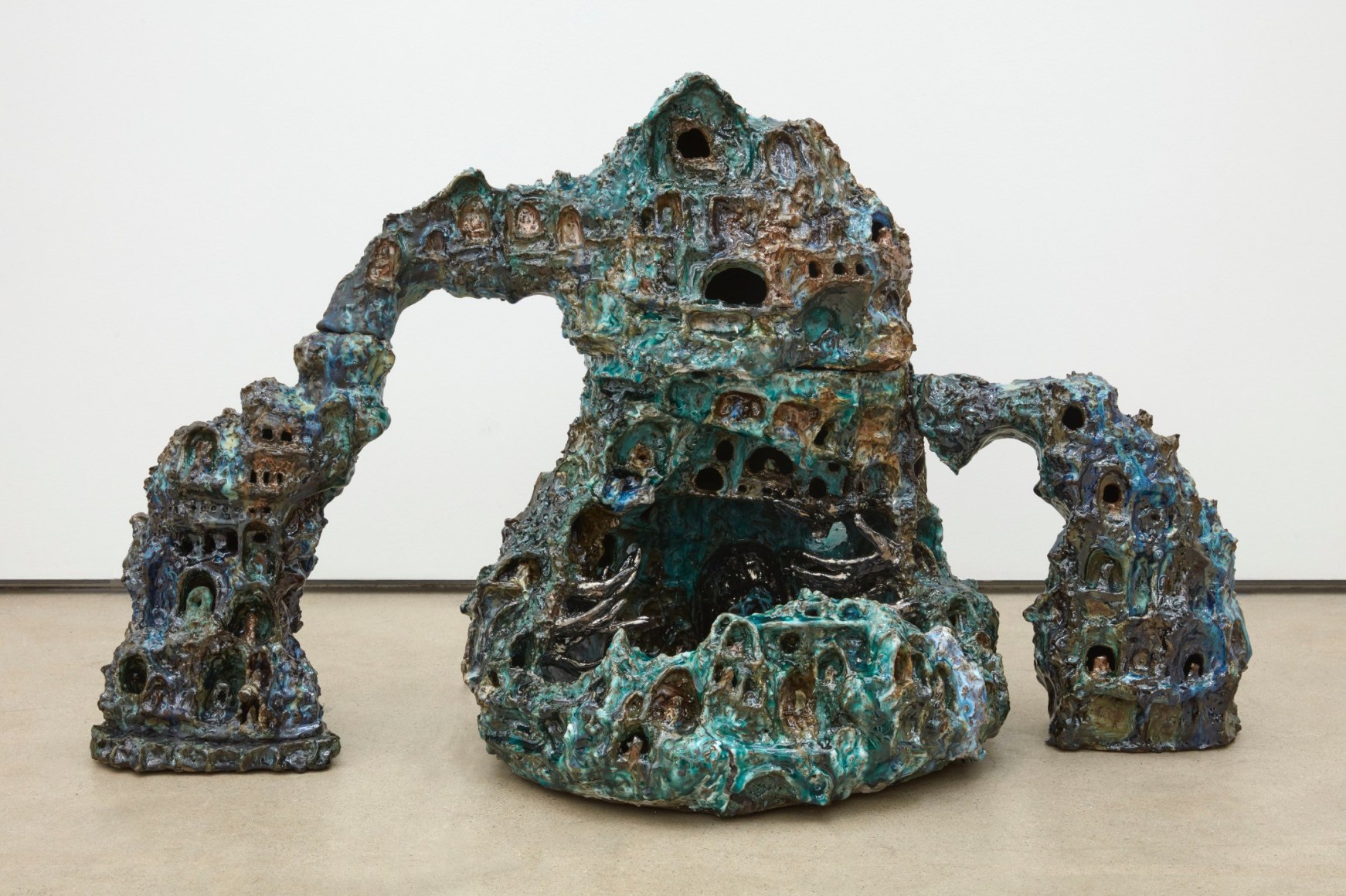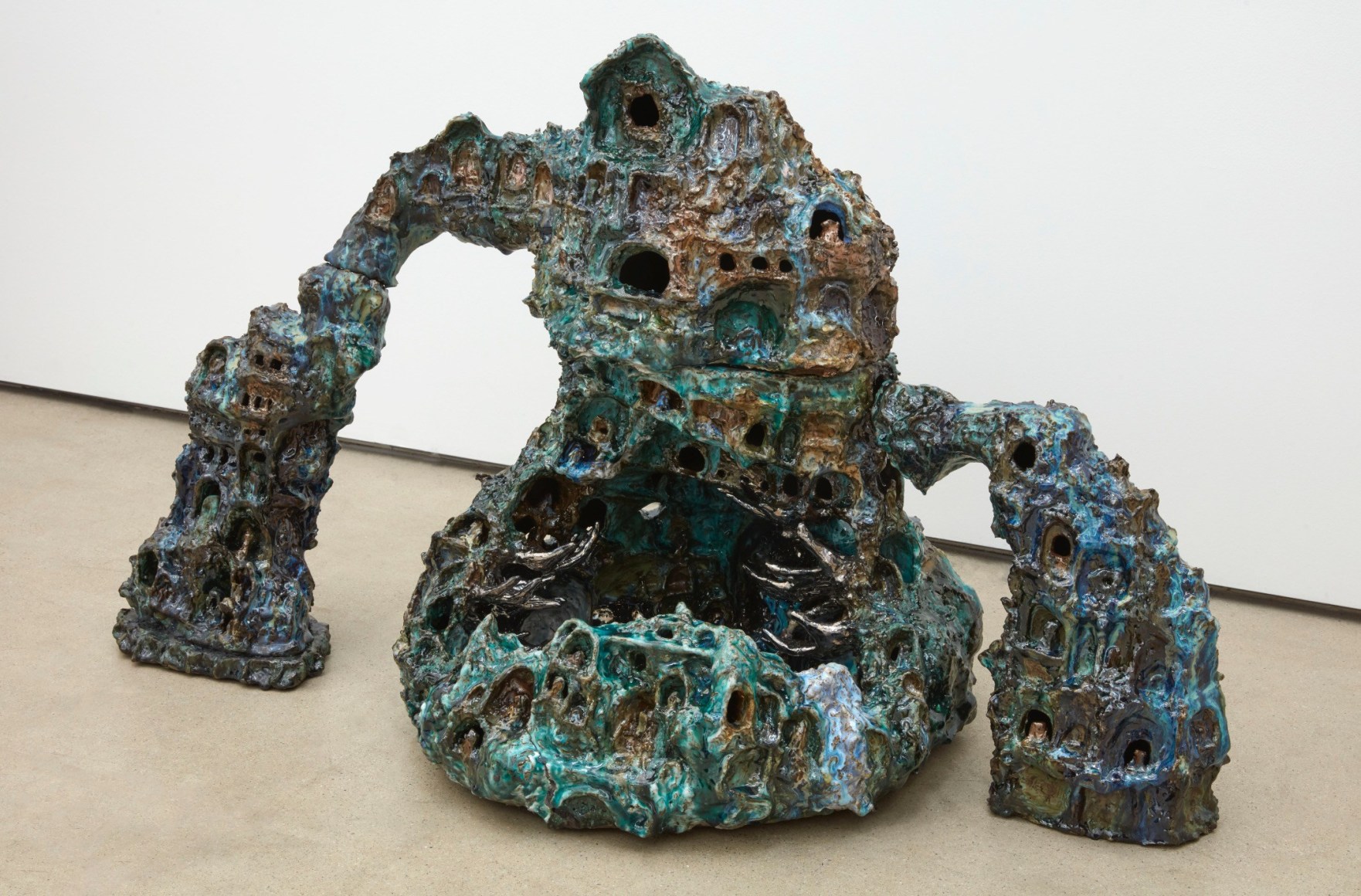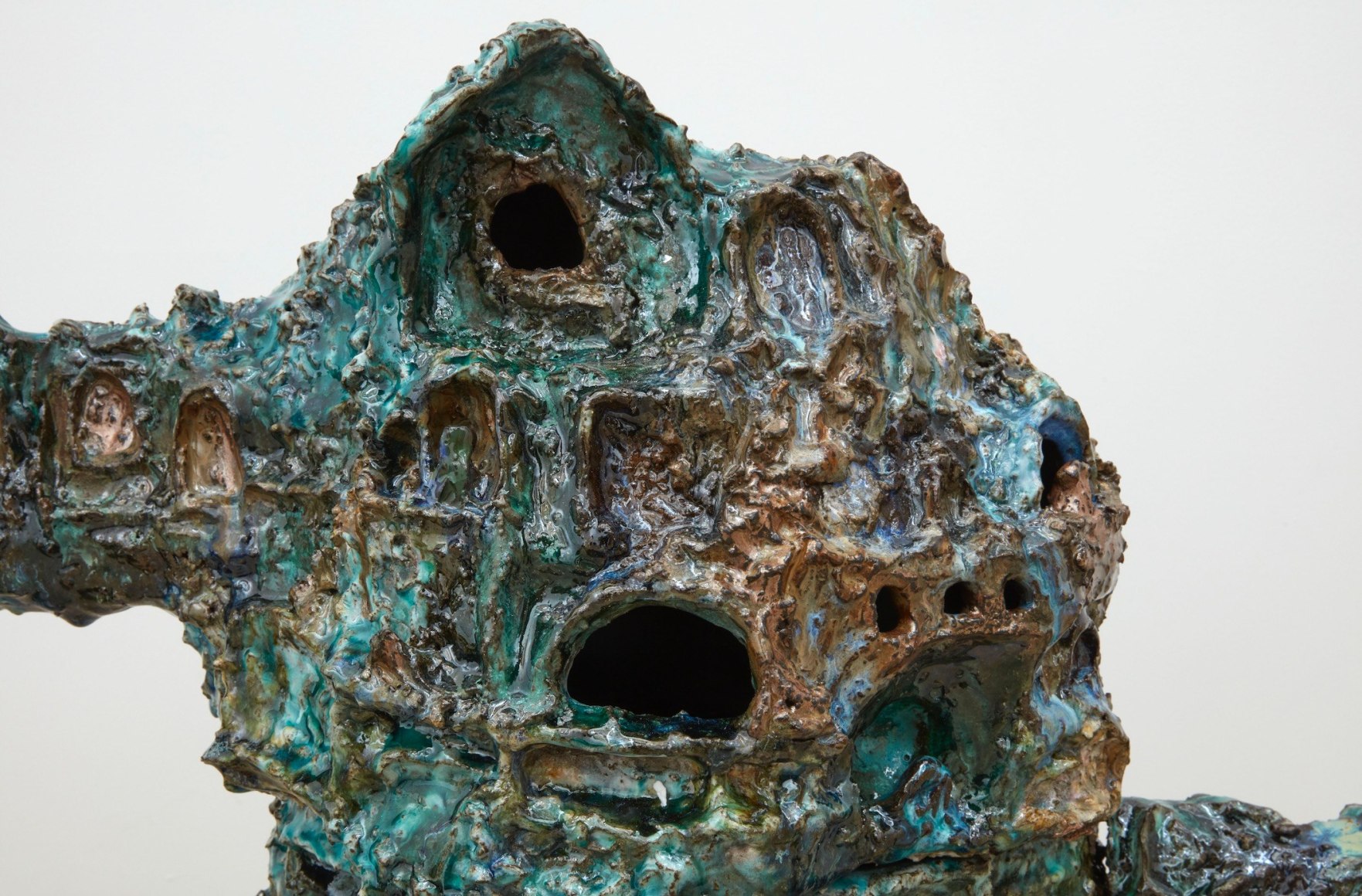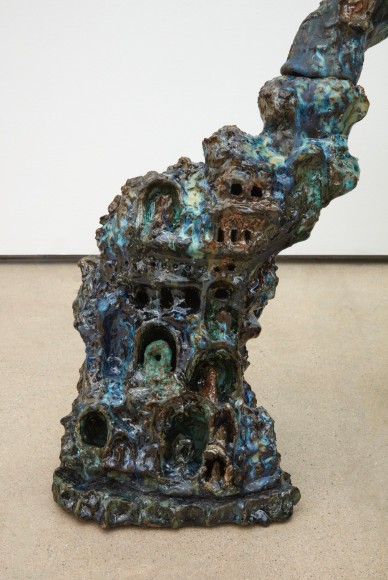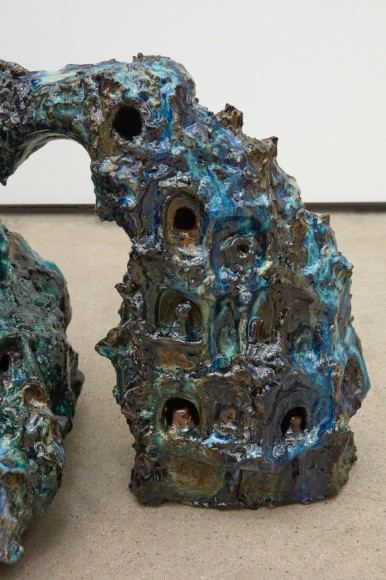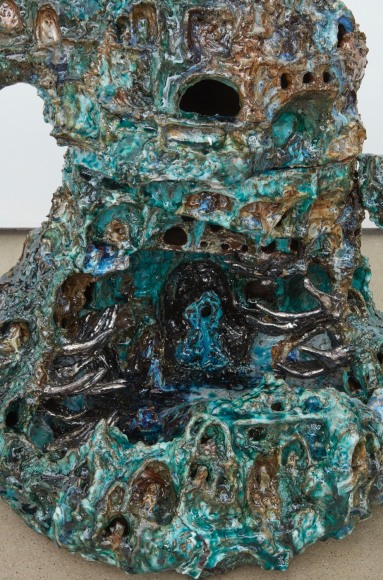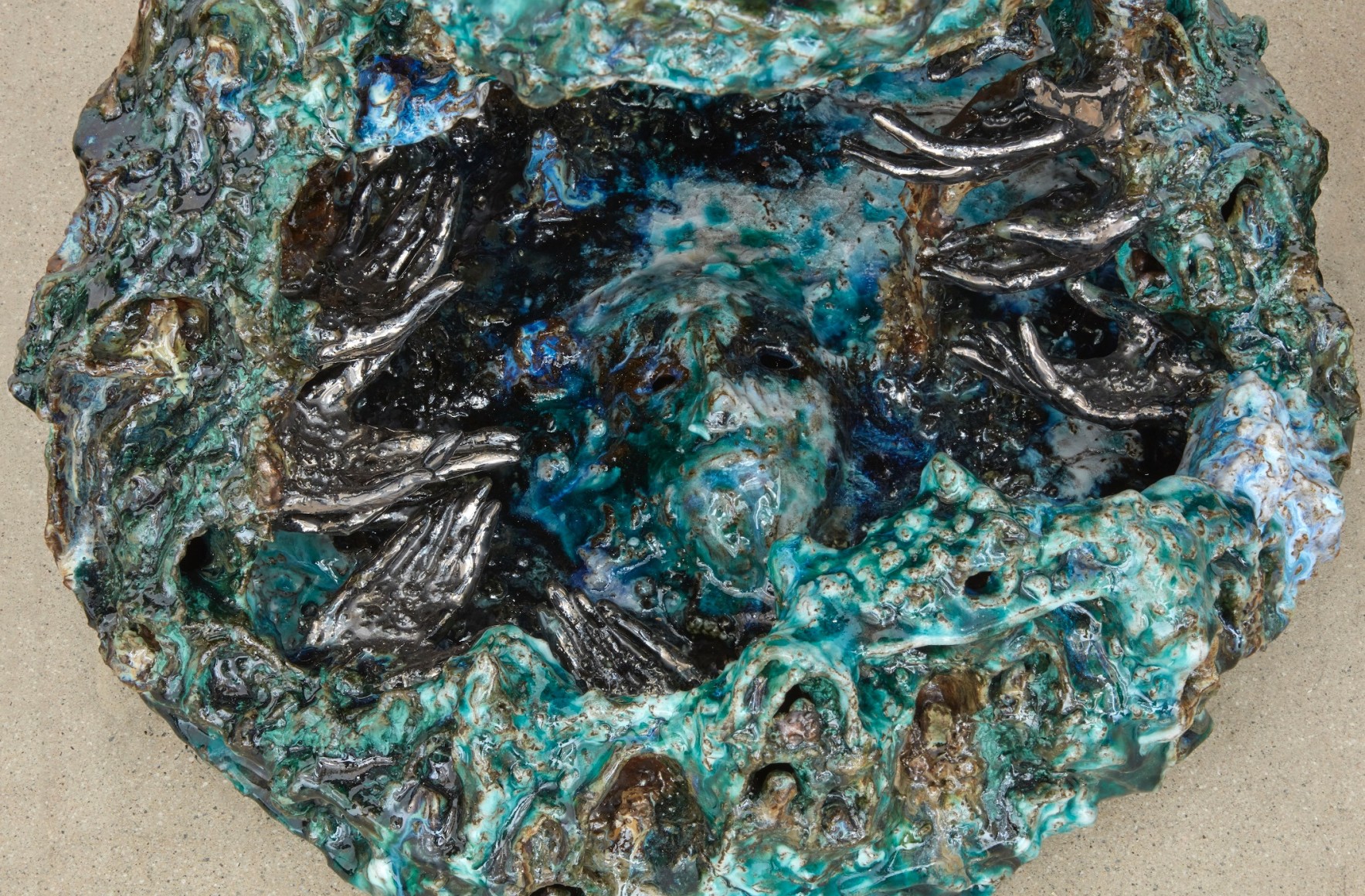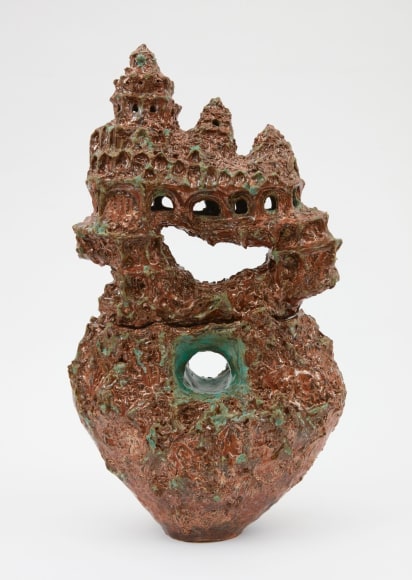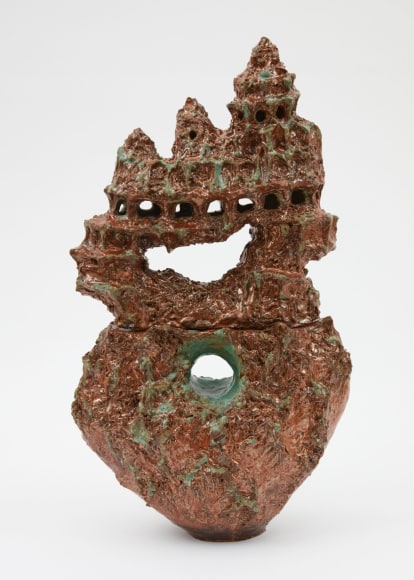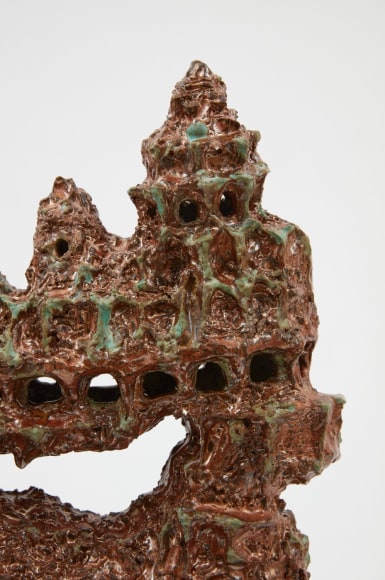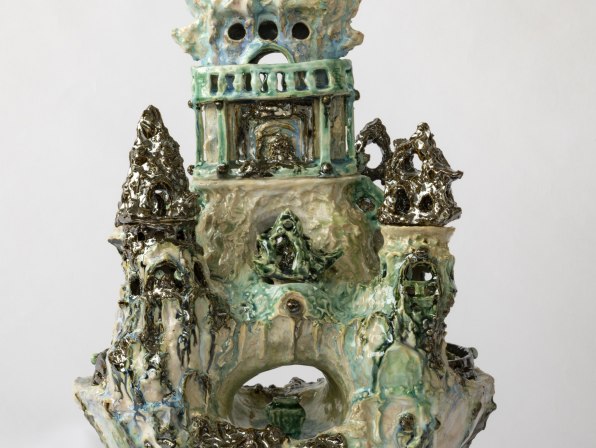
Diasporic intimacy can be approached only through indirection and intimation, through stories and secrets. It is spoken in a foreign language that reveals the inadequacies of translation. Diasporic intimacy does not promise an unmediated emotional fusion but only a precarious affection - no less deep, while aware of its transience. In contrast to the utopian images of intimacy as transparency, authenticity, and ultimate belonging, diasporic intimacy is dystopian by definition; it is rooted in the suspicion of a single home, It thrives on unpredictable chance encounters, on hope for human understanding....It is haunted by images of home and homeland, yet it also discloses some of the furtive pleasures of exile.
—On Diasporic Intimacy: Ilya Kabakov's Installations and Immigrant Homes by Svetlana Boym
Heidi Lau’s new body of work titled Spirit Vessels was created in the wake of New York State’s Stay-At-Home mandate. While trapped inside the confines of her 500 square foot apartment, outside Covid19 devastated the vibrant city that Lau has grown to call home. This story hums with potency across the far stretches of our plane. Lau’s influential circumference is typically based around the idea of the monumental—with connections to empire, history and memorials. Given present conditions, these generative factors felt shaky, vulnerable, and too unstable to source from.
Rather, inversely, Lau succumbed to the depths of her own interior—which manifested as conversations prodding below the surface of physical and mental states. Corresponding to ideas of home and safety, explorations of intimacy were realized in ceramic architectural miniatures and vessels. As one of the oldest and most universal materials associated with productive and artistic labor, clay naturally lends itself to the expression of the human condition through material culture and the reconsideration of human activities at large.
“What if one can inhabit these vessels as a last resort? What do our bodies and minds have to look like?”, Lau provokes. These Spirit Vessels are gutted, overgrown, void of ground level doors or windows and grant no room for standing.
In a sense these miniature buildings are self-portraits, drawing from the influence of colonial architecture in Macau, which illustrate the passage of time with their own diminishing materiality. Ever since immigrating to the US at the age of 17, Lau developed the habit of taking non-artistic photos of buildings whenever she would visit family in Macau. Steering clear of the state-instituted monuments and UN heritage sites, Lau explores hidden alleys and deserted houses in the old part of town.
Starting a few years after the transfer of sovereignty of Macau from Portugal to the People's Republic of China (PRC) in 1999, Macau experienced rapid urban reorganization and rebuilding, at the expense of mercilessly erased neighborhoods. In constructing Spirit Vessels, Lau considered her own documentation and pieced together architectural elements from different buildings. Like a dream or distant memory colored with nostalgia, an exact copy can never be made because an authentic original never existed. Each molding, tile, ornamental iron window frame and the deliberate pairing of neo-classical columns with Song Dynasty green glazed roof tiles, silently bear witness to the “fateful ties' between a dying empire and new colonial power. Manifested almost 500 years ago, its echoes are still felt to this date.
The ceramic, architectural Spirit Vessels also reference mingqi: ceramic burial objects prevalent during Eastern Han Dynasty. During this period, models of real-life objects were placed in tombs to provide for the deceased, which needed real-life provisions for sustenance and reassurance in the afterlife. This was not the life-sized world of the scale created for Emperors, but a more humble, wanky and facsimile version for commoners. These vessels in some ways became an aspiration, and the blueprint of the underworld. Perhaps only spirits can truly inhabit and linger these spaces.
Heidi Lau grew up in Macau and currently lives and works in New York, New York. Lau’s practice engages in the making of minor history and the recreation of that which has been lost to time and man. Her ceramic work is modeled after tokens of remembrance—ritual objects, funerary monuments, and fossilized creatures—which are infested, deconstructed, and rebuilt by hand. Reconfiguring fragmented personal and collective memories, Lau makes collections of symbolic artifacts and zoomorphic ruins as materialization of the archaic and the invisible. In the process, she reenacts the non-linearity and materiality of the past, molding a tactile connection to the disappearing, impossible identity of home: Taoist mythology, folk superstitions, and Macau’s colonial history provide essential source material for her exploration of transcendental homelessness, displacement, and nostalgia as the condition of contemporary existence.
Lau's work has been exhibited in international institutions including the 58th International Art Exhibition of La Biennale di Venezia, Venice; the Museum of Arts and Design, New York; the Bronx Museum of the Art, New York; the Museum of Chinese in America, New York; BRIC, New York; and the Macau Museum of Art, among others.
Her practice has been supported by numerous residencies and awards, including the Emerging Artist Fellowship at Socrates Sculpture Park, Lower Manhattan Cultural Council Process Space, the Martin Wong Foundation Scholarship, and the Joan Mitchell Foundation Painters and Sculptor Grant.

